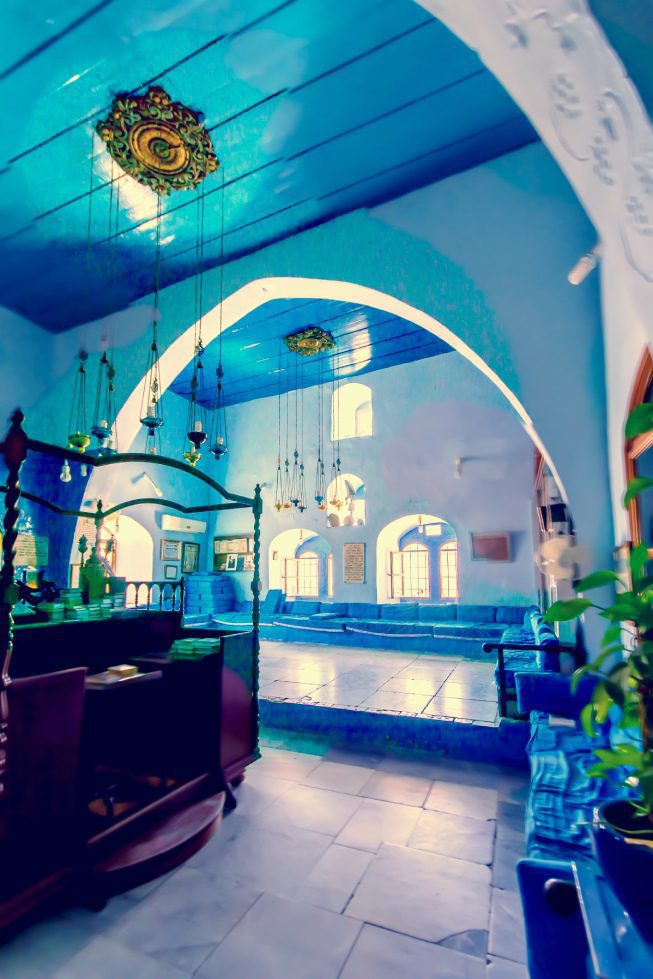On Jewish Heritage Galilee Tour we shall go on a search for some spirituality. In addition we will explore the Galilee Region that was the center of population for Jews for centuries. The golden era was during the Byzantine period when Jews had to leave Judea and Jerusalem and immigrated to the Galilee region.
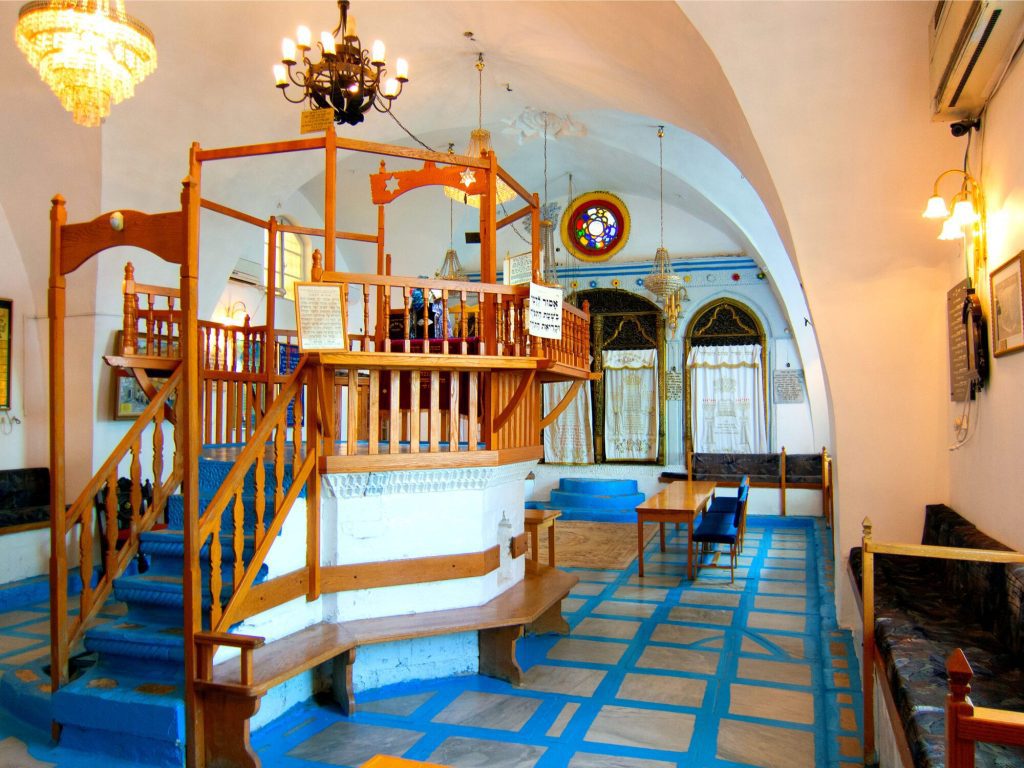
Jewish Heritage Galilee Tour: Safed, The City of Kabalah
Our guided tour in Israel this time begins with Rabbi Shimon Bar Yochai Tomb; located at Mount Meron. If you haven’t heard the name; that’s totally fine this is why I am here for. So Shimon Bar Yochai was a 2nd-century tannaitic sage in ancient Judea; said to be active after the destruction of the Second Temple in 70 CE. He was one of the most eminent disciples of Rabbi Akiva (d.136 CE) in his Yeshiva in Bnei Brak. Shimon’s love for his great teacher was profound. When Akiva was thrown into prison by Hadrian, Shimon found a way to enter the prison. He still insisted upon Akiva’s teaching him.
Old City Jerusalem Jewish Heritage Tour
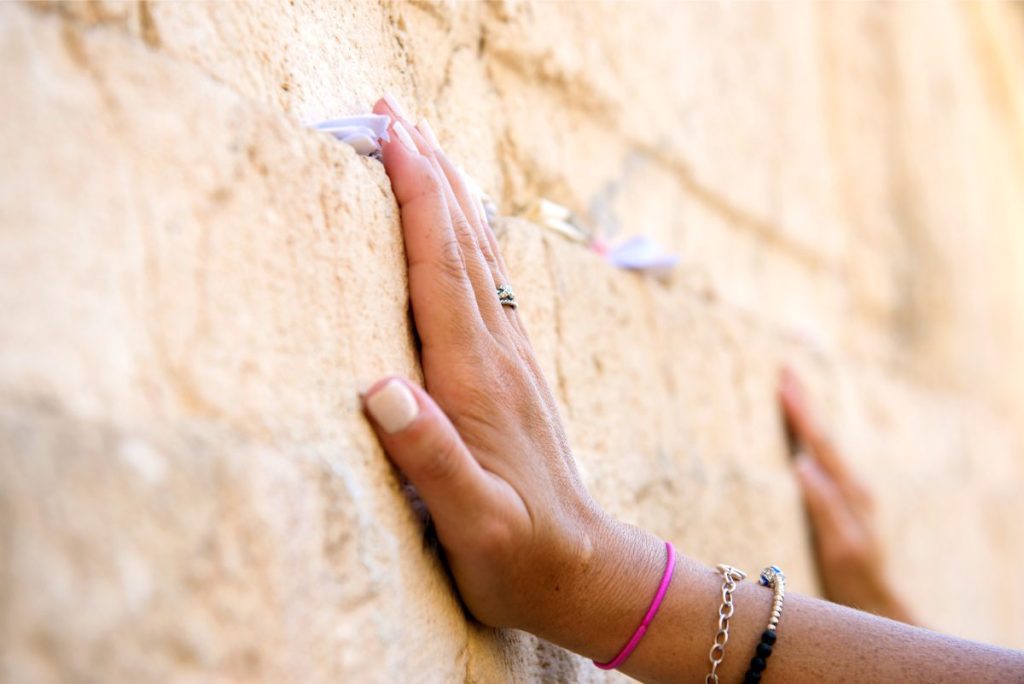
These days were times of persecution by the Romans. It was at the time of the Ten Martyrs that in short were ten Rabbis that the Roman Empire martyred after the destruction of the Second Temple and the Bar Kochba Revolt. Rabbi Akiva was one of those ten martyrs; tradition says his skin was raked with iron combs. He was one of the greatest supporters of the Bar Kochba Revolt. Despite the pain consuming him, he could still proclaim God’s providence in the world by reciting the Shema, drawing out the final Echad – “One.” On our tour, we will visit his modern tomb in Tiberias. And then we will have lots of time to elaborate on the huge mark he left on Judaism for generations to come.
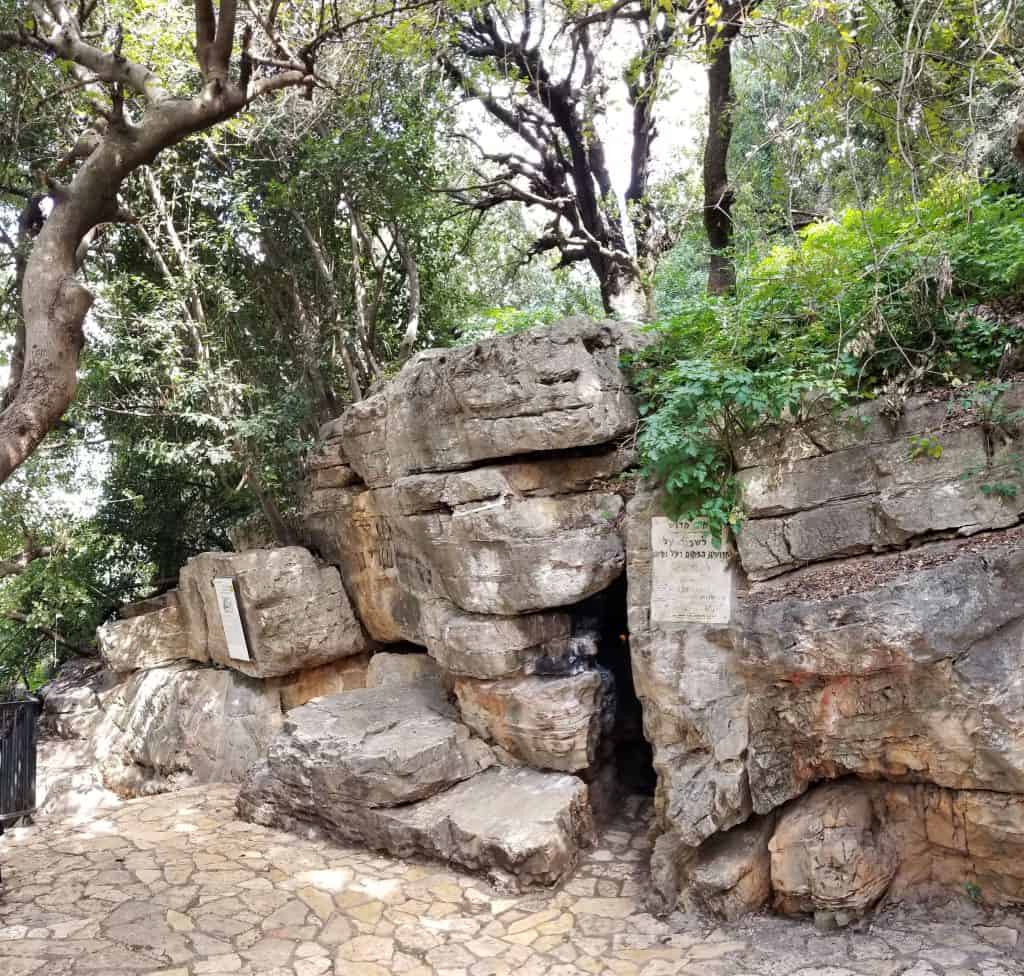
Credit: Heritage Conservation Outside The City Pikiwiki Israel, CC BY 2.5, via Wikimedia Commons
Jewish Heritage Galilee Tour: Rabbi Shimon Bar Yochai Hides in A Cave
The persecution of the Jews under Hadrian inspired Shimon with a different opinion of the Romans than that held by his father. Shimon often demonstrated his anti-Roman feeling. When, at a meeting between Shimon and his former fellow pupils at Usha, probably about a year and a half after Akiva’s death (c. 136 CE); Judah ben Ilai spoke in praise of the Roman government, Shimon replied that the institutions which seemed so praiseworthy to Judah were for the benefit of the Romans only; to facilitate the carrying out of their wicked designs. Shimon’s words were carried by Judah b. Gerim (one of his own pupils) to the Roman governor; who sentenced Shimon to death. So Shimon was compelled to seek refuge in a cavern, where he remained for thirteen years, till the emperor, possibly Hadrian, died. Tradition points to an old cave in Peki’in where Bar Yochai hid from the Romans.
Best Guide for the Arava Valley
His name became connected with mystic lore, and he became a chief authority for the kabbalists; for this reason, the Zohar first appeared under the name “Midrash de-Rabbi Shim’on ben Yochai”. While he is attributed authorship of the Zohar by many kabbalists, the authenticity of this claim has been challenged by both secular and religious scholars. who point to Moses de León as the author who published the Zohar in the 13th century.
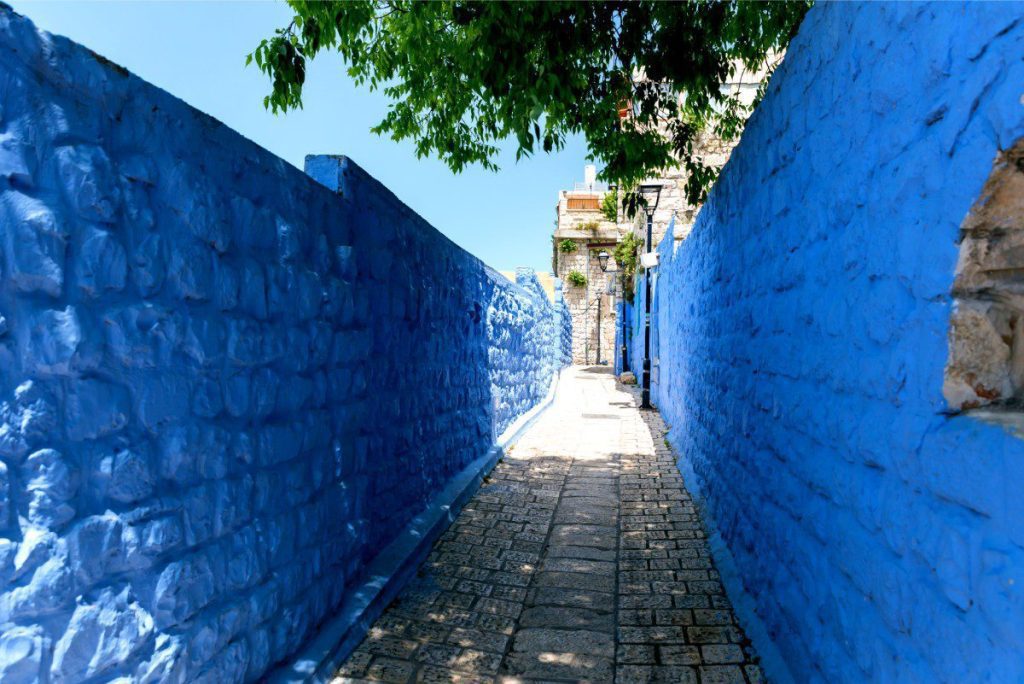
Jewish Heritage Galilee Tour: Kabbalah and Safed
Throughout the next millennium, the study of Kabbalah was limited to a few select scholars of each generation. In the Middle Ages, many of these scholars made their way to Israel after the Spanish Expulsion of 1492. And of those, many came to Tzfat; which was believed to have a special connection to Kabbalah because of its proximity to the area where Rabbi Shimon had taught, as well as to Rabbi Shimon’s gravesite, on Mt. Meron. Among these scholars, Rabbi Isaac Luria, the ARI, came to Tzfat and he expanded Kabbalah study to new heights. After the death of the ARI, his students developed his teachings; and until today, the Kabbalah that is studied throughout the world is Lurianic Kabbalah, named for the Rabbi who directed the system which would become the dominant genre of Kabbalah study throughout the world.
Jewish Heritage Galilee Tour: Isaac Luria
On our private tour of Safed, we will get to know Isaac Luria real well. He was the foremost rabbi and Jewish mystic in the community of Safed in the Galilee region of Ottoman Syria. He is considered the father of contemporary Kabbalah, his teachings being referred to as Lurianic Kabbalah. Luria was born in 1534 in Jerusalem. While still a child, Luria lost his father; and was brought up by his rich maternal uncle Mordechai Frances, a tax-farmer from Cairo, Egypt. His uncle placed him under the best Jewish teachers, including the leading rabbinic scholar David ibn Zimra.
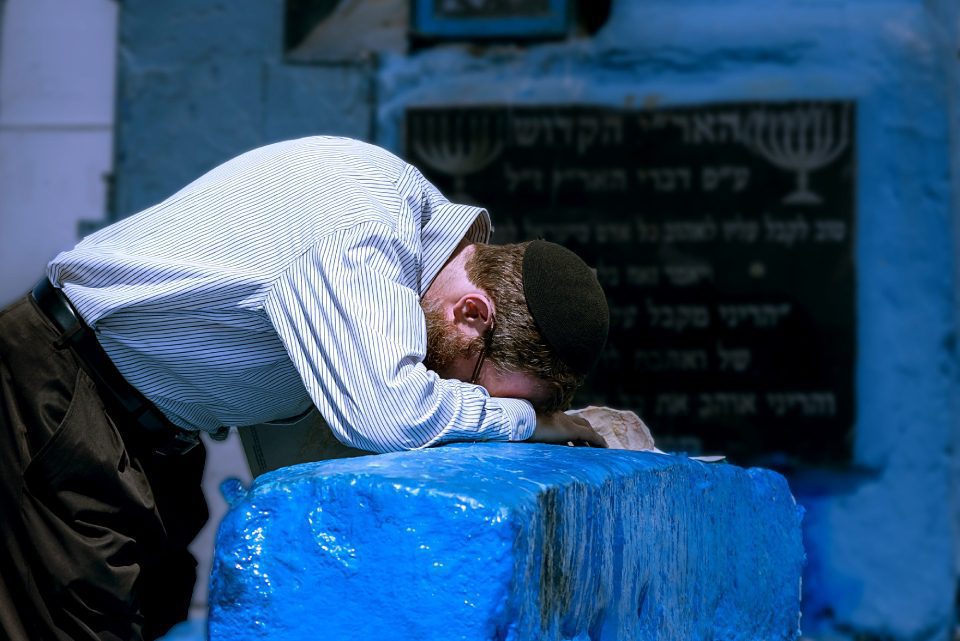
At the age of fifteen, he married a cousin; the daughter of Mordechai Frances, and, being amply provided for financially; he was able to continue his studies. Though he initially may have pursued a career in business, he soon turned to asceticism and mysticism. Around the age of twenty-two, he became engrossed in the study of the Zohar (a major work of the Kabbalah that had recently been printed for the first time) and adopted the life of a recluse. Retreating to the banks of the Nile for seven years, he secluded himself in an isolated cottage; giving himself up entirely to meditation. He visited his family only on Shabbat. But even at home, he would not utter a word, even to his wife. When it was necessary for him to say something; he would say it in the fewest words possible; and then, only in Hebrew.
Hus Teachings
In 1569, Luria moved back to Eretz Israel; and after a short sojourn in Jerusalem, where his new kabbalistic system seemed to have met with little success, he settled in Safed. Safed over the previous decades had become a center for kabbalistic studies, led by Rabbi Moses Cordovero. Soon Luria had two classes of disciples. Firstly, the novices, to whom he expounded the elementary Kabbalah, and initiates; who became the repositories of his secret teachings and his formulas of invocation and conjuration.
Heroism in Judaism
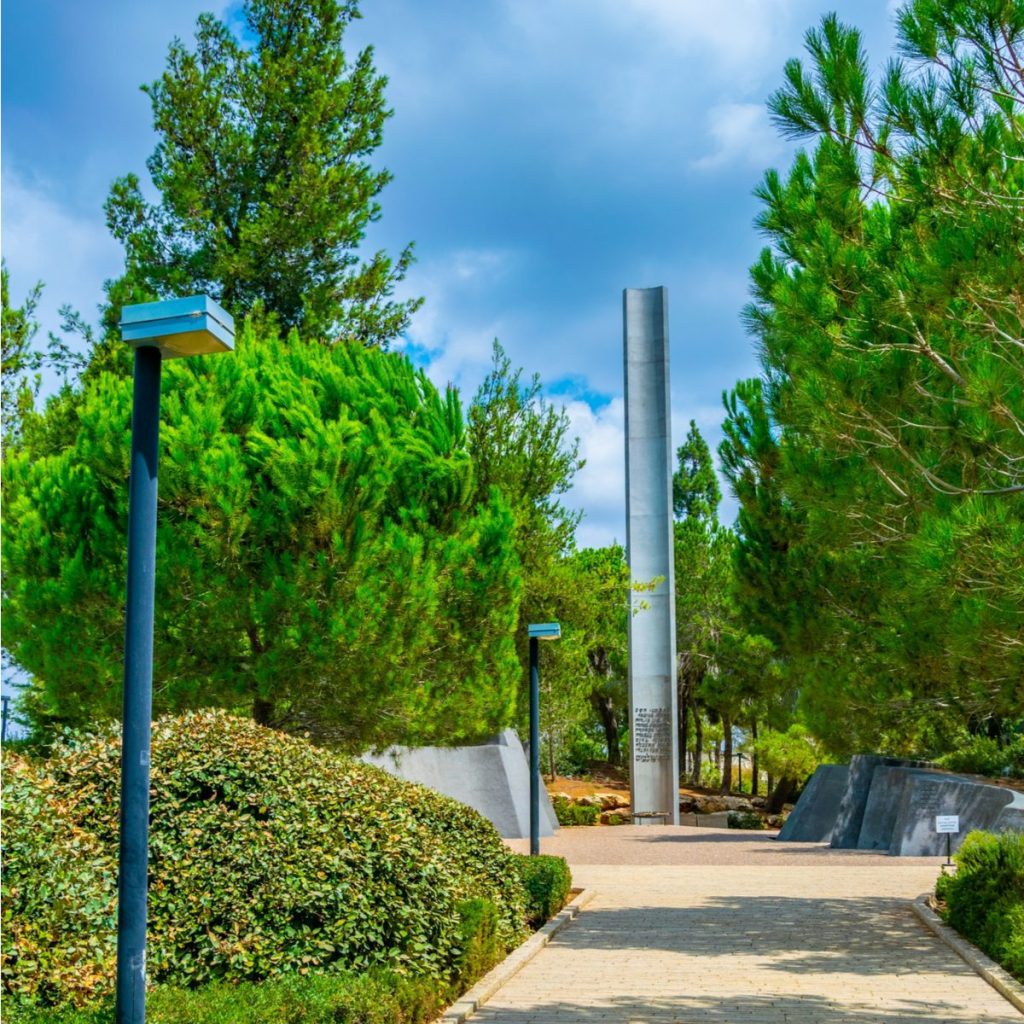
Luria used to deliver his lectures extemporaneously and did not write much; with a few exceptions, including some kabbalistic poems in Aramaic for the Shabbat table. The real exponent of his kabbalistic system was Rabbi Hayyim Vital. He collected all the notes of the lectures which Luria’s disciples had made; and from these notes were produced numerous works, the most important of which was the Etz Chaim, (“Tree of Life”). At first, this circulated in manuscript copies; and each of Luria’s disciples had to pledge himself, under pain of ex-communication, not to allow a copy to be made for a foreign country; so that for a time all the manuscripts remained in Israel.
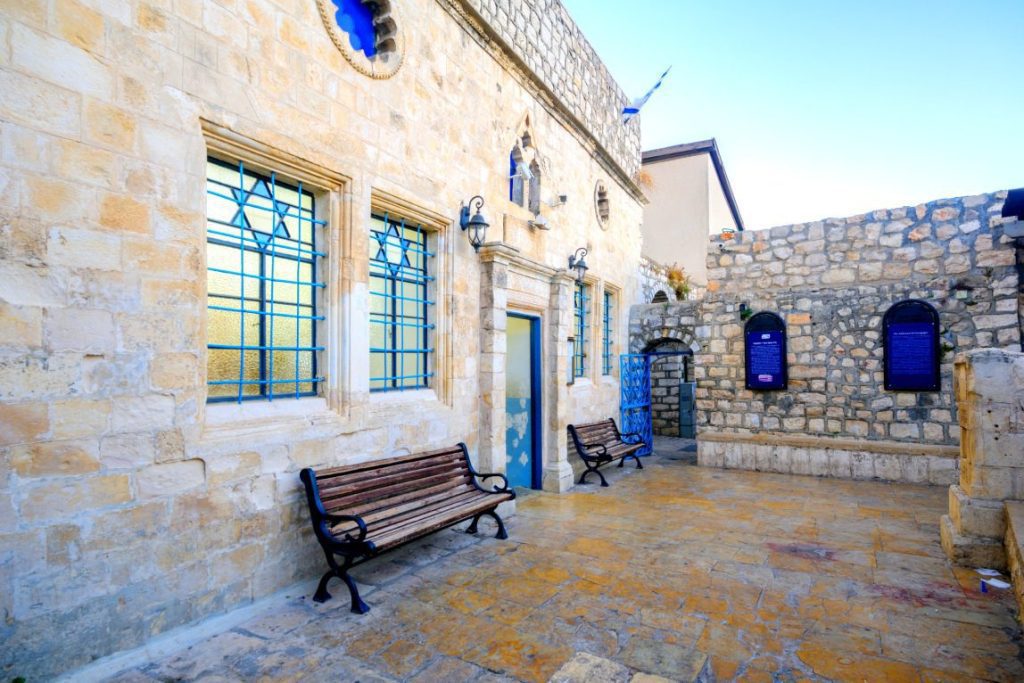
Jewish Heritage Galilee Tour: The Ari Ashkenazi Synagogue
The synagogue was established by Sephardic immigrants from Greece who arrived in Safed during the sixteenth century. When Rabbi Isaac Luria came in 1570, he prayed in this synagogue on the eve of the Shabbat. During the service, he was accustomed to leaving the temple with his disciples and walking to a nearby field to welcome the Sabbath. Alternatively, this was a forested area at the margin of Safed; and Rabbi Isaac Luria used to receive the Sabbath in these forests.
Rabbi Luria’s tradition of welcoming the Sabbath during Kabbalat Shabbat is still echoed in Jewish communities around the world during the singing of Lecha Dodi, when worshippers turn toward the entrance of the synagogue to “greet” the sabbath. A Hebrew inscription above the entrance lintel reads: “How awe-inspiring is this place, the synagogue of the Ari of blessed memory.” The Holy Ark was carved from olive wood by a craftsman from Galicia, in the style of the synagogues of Eastern Europe. It includes an anthropomorphic image of a lion, alluding to Rabbi Luria’s acronym Ari, which means lion.
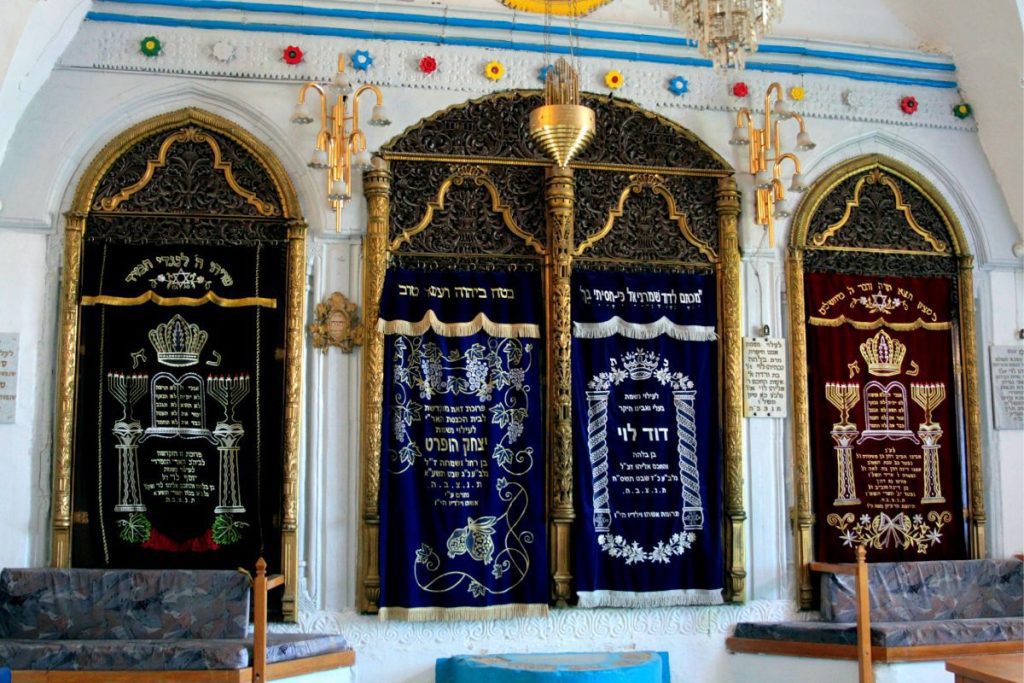
The Ari Sephardic Synagogue
Considered to be the most ancient synagogue in Safed, located just above Safed’s Ancient Cemetery where Rabbi Isaac Luria is buried. The 14th-century synagogue was initially named after Elijah the Prophet. The traveler Moshe Basula, who visited Safed in early 1522, wrote:
“Safed has three synagogues [… ] and one of Westerners (= descendants of North Africa), and they call it the synagogue of Elijah the Prophet because it’s ancient; and the tradition is that this is where Elijah prayed.”
15th Century Traveler Moshe Basula
According to tradition in this synagogue, Rabbi Yitzchak Luria (the Ari) prayed, studied, and lived in Safed during the years 1572-1570. Now we will go down to the cemetery and visit the tomb of Rabbi Isaac Luria, There we can talk more in detail about what is exactly Kabbalah.
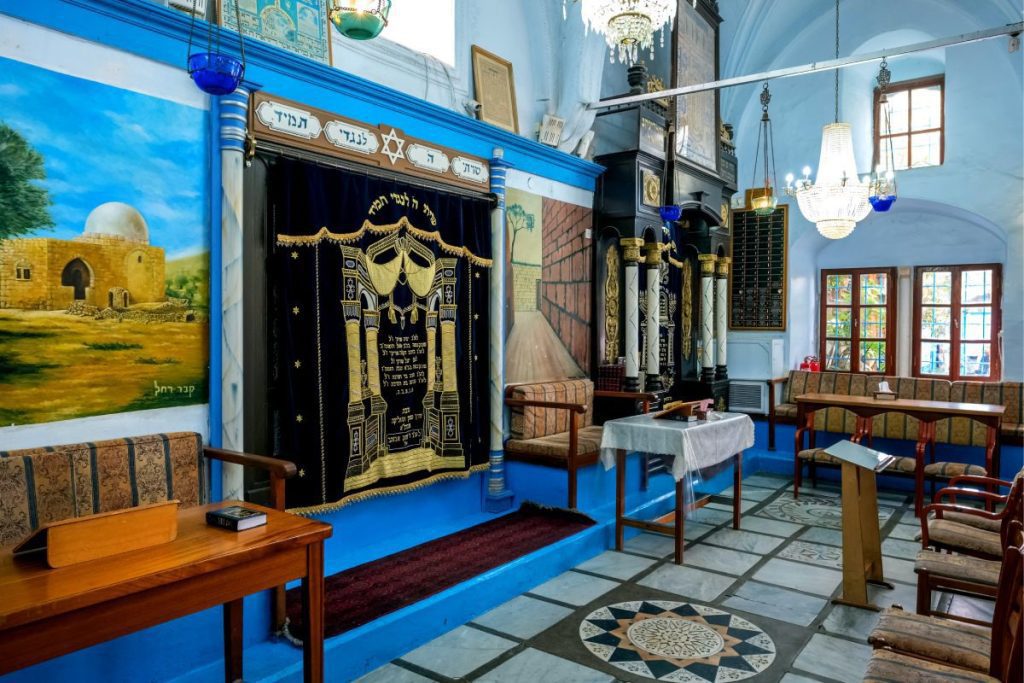
Jewish Heritage Galilee Tour: The Early Modern Safed Community
The 16th-century renaissance of Kabbalah in the Galilean community of Safed, which included Joseph Karo; Moshe Alshich; Cordovero; Luria, and others; was shaped by their particular spiritual and historical outlook. After the 1492 Expulsion from Spain, they felt a personal urgency and responsibility on behalf of the Jewish people to hasten Messianic redemption. This involved stress on close kinship and ascetic practices and the development of rituals with a communal-messianic focus. The new developments of Cordovero and Luria in systemizing previous Kabbalah sought mystical dissemination beyond the close scholarly circles to which Kabbalah had previously been restricted. They held that wide publication of these teachings; and meditative practices based on them; would hasten redemption for the Jewish people.
Jewish Heritage Galilee Tour: The Tomb of Rabbi Isaac Luria
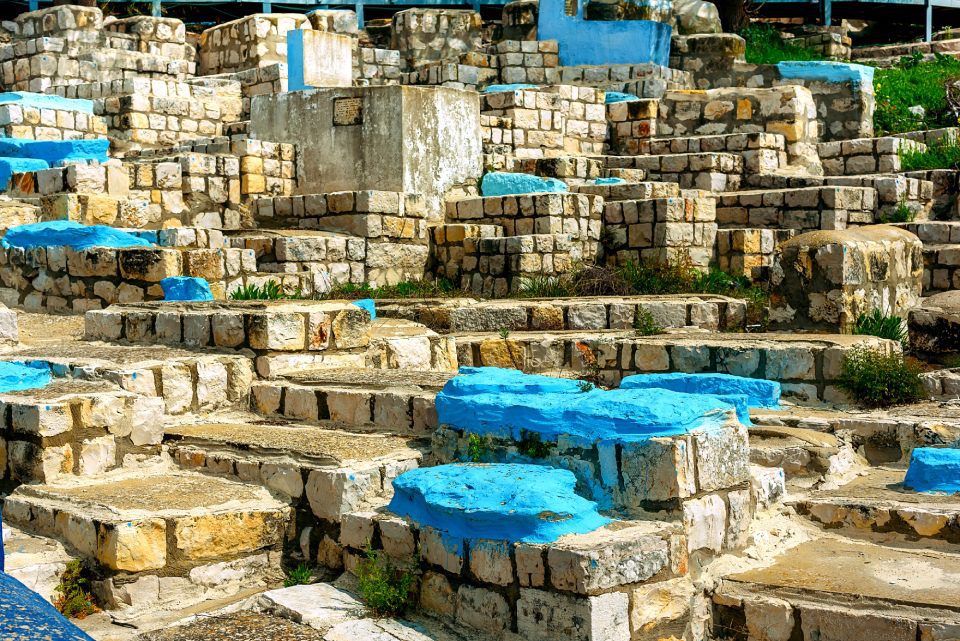
I’ll try to do my best to explain some basic concepts of Lurianic Kabbalah. So first, let’s go back to basics. Jewish Kabbalah is a set of teachings meant to explain the relationship between God, the unchanging, eternal, and mysterious Ein Sof (“The Infinite”); and the mortal and finite universe (God’s creation). It forms the foundation of mystical religious interpretations within Judaism. One of the fundamental kabbalistic texts, the Zohar, was first published in the 13th century; and the almost universal form adhered to in modern Judaism is Lurianic Kabbalah.
Jewish Heritage Galilee Tour: The Synagogue of Rabbi Joseph Karo
The ending note of our tour will be in another celebrated synagogue in Safed. According to tradition, it was where Rabbi Joseph Karo used to teach his students. The original structure from the 16th century didn’t last and had to be rebuilt due to earthquakes and later centuries. Especially the 1837 Earthquake that demolished Safed to a great extent. Rabbi Joseph Karo is known for the codification of Jewish law; what we call today the Shulchan Aruch. To this day it is still automotive for all Jews.
Rabbi Joseph Karo has a similar history to so many that came to Safed in the 16th century. In other words, he was born in Toledo in 1488. When he got to be four years old; he was forced like the rest of the Jews to flee Spain with his family as a result of the Alhambra Decree, and subsequently settled in Portugal. After the expulsion of the Jews from Portugal in 1497, the Ottomans invited the Jews to settle within their empire.
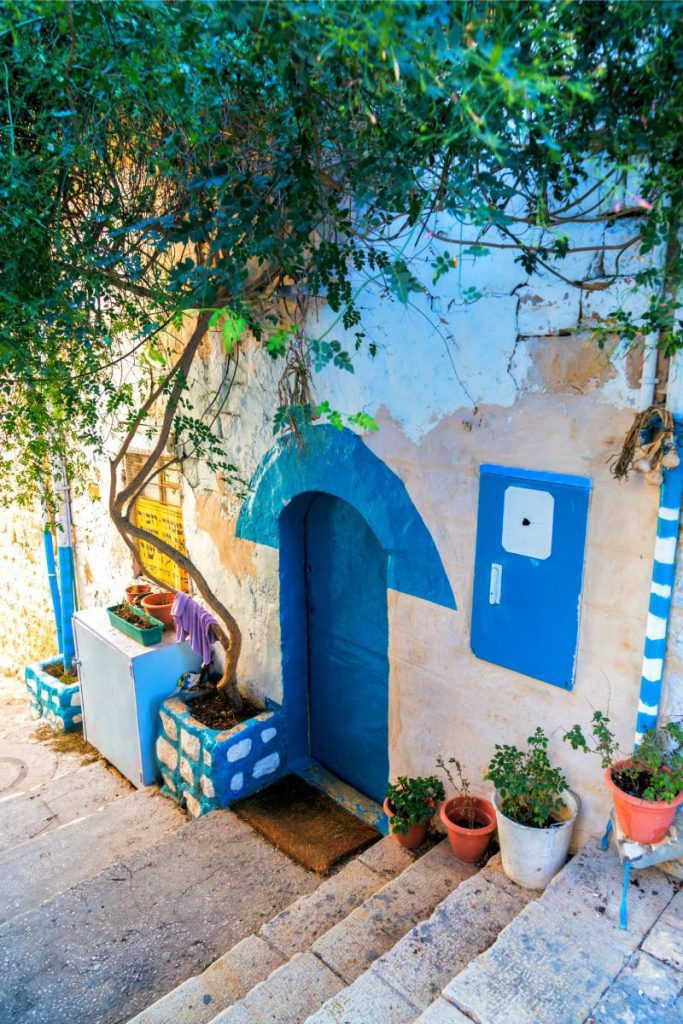
Karo went with his parents, after a brief move to Morocco, to Nikopolis, then a city under Ottoman rule. In Nikopol, he received his first instruction from his father, who was himself an eminent Talmudist. Then he later settled in the city of Safed, where he arrived about 1535. By 1555, Joseph Karo was already a resident of the village Biriyya near Safed, during which year he completed writing the first order of the Shulhan Arukh.
His Rabbinic Career
At Safed, he met Jacob Berab and was soon appointed a member of his rabbinical court. Berab exerted great influence upon him, and Karo became an enthusiastic supporter of Berab’s plans for the reinstitution of semicha (rabbinical ordination) which had been in abeyance for over 11 centuries. Karo was one of the first he ordained and after Berab’s death, Karo tried to perpetuate the scheme by ordaining his pupil Moshe Alshich, but he finally gave up his endeavors, convinced that he could not overcome the opposition to ordination. Karo also established a Beth Midrash where he taught Torah to over 200 students.
When Jacob Berab died, Karo was regarded as his successor, and together with Rabbi Moshe of Trani he headed the Rabbinical Court of Safed. In fact, by this time, the Rabbinical Court of Safed had become the central rabbinical court in all of Old Yishuv and indeed of the diaspora as well. Thus there was not a single matter of national or global importance that did not come to the attention and ruling of the Safed Beth Din. Its rulings were accepted as final and conclusive; Karo’s halachic decisions and clarifications were sought by sages from every corner of the diaspora. Rabbi Joseph Karo was also visited in Safed by the great Egyptian scholars of his day, Rabbi David ibn Abi Zimra and Rabbi Yaakov Castro. He came to be regarded as the leader of the entire generation.
